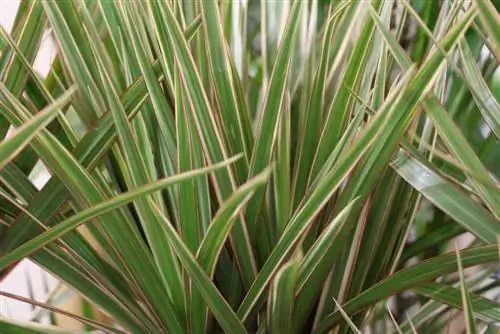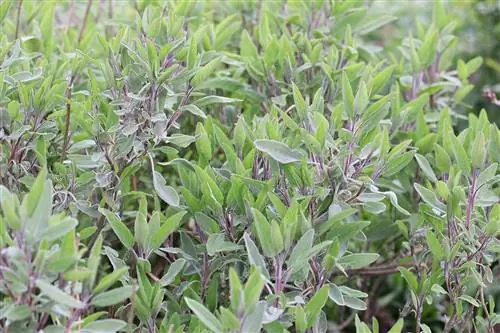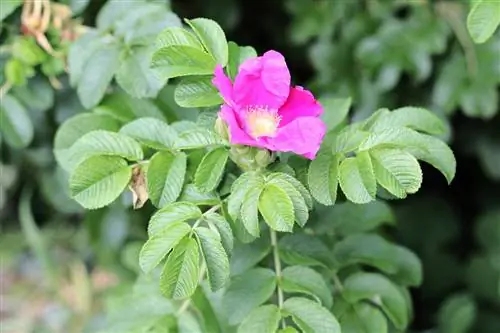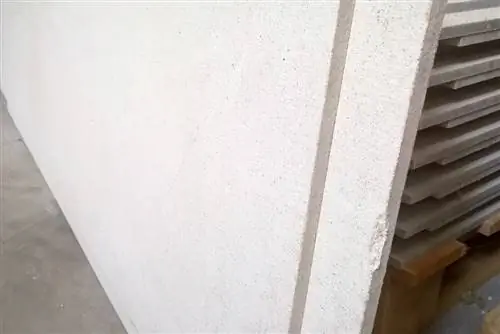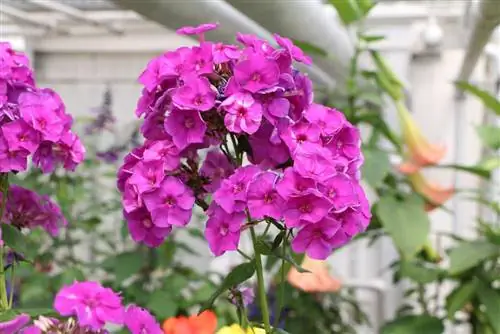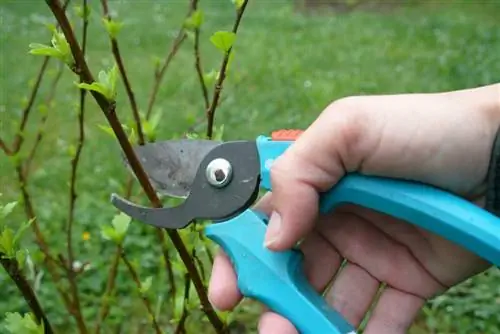- Author admin [email protected].
- Public 2023-12-17 03:39.
- Last modified 2025-01-24 12:45.
The Dracaena marginata is a perfect roommate for hobby gardeners who like to take a hands-off approach to caring for their ornamental plants. With its slender trunk and edged, elongated leaves, the dragon tree stretches meters high without being constantly pampered for this masterpiece. This character trait is why the tropical plant has enjoyed a steep career as one of the most popular houseplants in the world.
Proof is provided by the following instructions for care, cutting and propagation, which contain no gardening stumbling blocks even for beginners.
Care
The dragon tree owes its fearsome name to two central attributes: It quickly replaces fallen leaves, just as a dragon grows new heads. In addition, the plant sap is reddish in color, like dragon's blood. It follows that a Dracaena marginata will forgive minor care mistakes in a good-natured manner and will quickly grow new leaves. Of course, leaf shedding does not have to happen if the following care instructions are followed.
Location
In the twilight of tropical rainforests, the Dracaena marginata thrives under the canopy of the jungle giants. The plant therefore has little to do with blazing sunshine. Moderate lighting conditions are more suitable for her.
- partially shaded location with morning or evening sun
- Shade in direct sunlight at midday
- warm temperatures from 15 to 30 °C
- Humidity of more than 60 percent
As long as the lighting conditions at the chosen location provide more than 700 lux, the dragon tree will happily sit there. By the way, he prefers to spend the warm season on the sheltered balcony. Here it creates a relaxing holiday feeling with its palm-tree-like silhouette. You should pay attention to the level of humidity, because dry air causes unsightly brown leaf tips. Therefore, fill the saucer with pebbles and water so that your edged dragon tree is surrounded by evaporated moisture.
Tip:
A Dracaena marginata always stretches towards the light. So that it does not grow unevenly in the long term or develop horny shoots, it is rotated a little every 14 days.
Substrate

The tropical plant not only looks like a palm tree, it also thrives excellently in palm soil. You don't have to make a big fuss about the subject of substrate, because commercially available compost-based potting soil also meets all the important requirements. You can improve the permeability by adding perlite, sand, seramis or pumice gravel. You can give the houseplant additional stability by using a mixture of clay-containing garden soil, compost, peat and inorganic additives for a loose structure.
Watering and fertilizing
The water requirement of a Dracaena marginata is at a medium level. He doesn't want to deal with wet feet just as he doesn't want to deal with completely dry balls. Watering using the immersion method has proven successful:
- immerse the root ball in water until it is soaked
- then let the water drain well
- Do not carry out the next dive until the substrate has dried thoroughly
- fertilize liquid every 14 days from March to September
The dragon tree has enormous growth power, which is further boosted by fertilizer. If you want less rapid growth, reduce the nutrient supply to a monthly dose.
Tip:
Like all tropical plants, the edged dragon tree prefers room temperature, lime-free water. Where there is no possibility of collecting rainwater, decalcified tap water serves as an alternative.
Cutting
The reasons for cutting a Dracaena marginata may be varied. The procedure always follows the same sequence and is no problem even for the inexperienced hand:
- cut off an unsightly tuft of leaves approx. 2 cm below its crown
- seal the cut with tree or candle wax
- Administer a little fertilizer after pruning
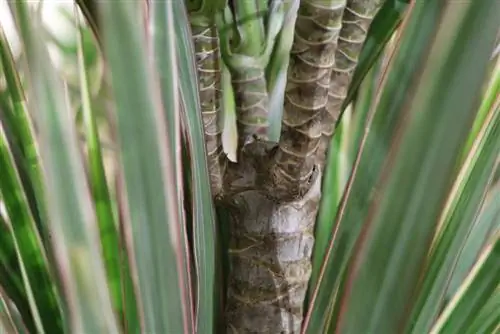
Within the following weeks, the plant will sprout again from several sleeping eyes in this location. Every cut back promotes denser branching and controls height growth.
Propagate
Cuttings
Propagation of a Dracaena marginata is possible throughout the entire growing season. Using head cuttings is very easy. Specifically, this refers to the small trunk branches with one of the pretty leaf clusters. As part of the pruning process, you will receive several specimens, which in this case should be at least 10-15 cm long. How to proceed:
- fill a pot with lean substrate, such as peat sand, pricking soil or TKS1 (peat culture substrate)
- shorten the leaves to 1 cm length
- insert at least half of the shoot into the soil
- Moisten the substrate and cuttings with lukewarm rainwater
To activate rooting, temperatures of 28-30 °C are required. You can achieve this in a heated indoor greenhouse that is placed on the partially shaded windowsill. Alternatively, place a plastic bag over the growing pot to create a warm, humid microclimate. Where the required degree of warmth is not achieved, rooting takes a very long time or does not take place at all.
Sowing
The seeds can be sown all year round. Since a bordered dragon tree rarely flowers and fruits in this latitude, the seeds are purchased from specialist exotic plant shops. We recommend preparatory treatment of the seeds to increase their germination spirit by soaking them in water at room temperature overnight.
- Fill cultivation pots with seed soil or coconut fiber
- insert the soaked seeds approx. 1 cm deep and sieve over them with sand
- moisten with water from the spray bottle or pour from below
- Place in a mini greenhouse in a partially shaded location
- optionally cover the pots with glass or foil
At a constant temperature of around 25 °C, germination takes about a month. During this time, make sure that the substrate does not dry out. If the cotyledons appear, the cover is ventilated regularly until it can be dispensed with completely. Seedlings with more than 3 pairs of leaves are transplanted into individual pots and placed a little brighter.
What to do if leaves are lost?

If the Dracaena marginata is not doing well, it signals its displeasure by dropping its leaves. The following measures may resolve the issue:
- Change location: If the lighting conditions at the location turn out to be too dark or too bright, the dragon tree will relocate better. The same applies to temperatures that are too cold below 15 °C. You should also not expect your dragon tree to sit next to an active radiator.
- Increase humidity: Dry air is one of the most common triggers for leaf drop. Commercially available humidifiers can help. You can make it more decorative with a pretty indoor fountain. If you take the time to repeatedly spray the elegant leaves with lime-free water, the problem will soon be a thing of the past.
- insulating underlay: If a room is not equipped with underfloor heating, the cold quickly moves into the root ball from below. This is primarily the cause of falling leaves during the winter. Place the Dracaena marginata on a coir mat, a block of wood without a similar insulating material.
Conclusion
The name Dracaena marginata is an easy-care houseplant that creates a natural feel-good atmosphere all year round. With a palm-like habit and lanceolate, red-edged leaves, the dragon tree is truly impossible to miss. The tropical plants ultimately owe their steep career to becoming one of the most popular houseplants to uncomplicated care, easy cutting and undramatic propagation.
What you should know about Dracaena marginata soon
- The Dracaena marginata comes from Madagascar. Its growth is slender, with lanceolate leaves.
- If cared for well, the dragon tree can grow quite tall. Dragon trees are often sold with twisted, thin trunks.
- Without a doubt, the Dracaena marginata is one of the most popular and probably easiest houseplants to care for.
The plants are commercially available with different leaf colors: the Care variety has single-colored leaves, the Bicolor variety has reddish-brown coloring on the edges. The Tricolor variety, on the other hand, has three-colored leaves, although this variety is the least resistant and therefore requires more care.
- The dragon tree loves warmth, so it is the ideal plant for a warm greenhouse or a heated winter garden.
- A very bright location is ideal, but it reacts very sensitively to blazing sun.
- Dracaena marginata loves temperatures around 20-23 °C in summer and in winter the temperature must not be less than 16 °C.
- Only the green variety can tolerate shade. High humidity is particularly appreciated in winter to compensate for the dry air from heating.
- The substrate should only be kept moderately moist. Waterlogging is generally poorly tolerated.
- If excess water collects in the saucer or planter, it should be thrown away quickly.
- The nutrient requirements are within the normal range. During the growth phase, the plant is fertilized with green plant fertilizer every 14 days.
- Stem cuttings, but also head cuttings, are suitable for propagation.
- Spring is the ideal time for repotting. A humic and loose soil mixture is used for this.
- If the air is too dry and there is too much heat at the same time, the plant can show an infestation of scale insects.

